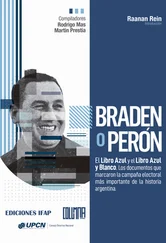Motor-rifle Division : 12,000 men—287 tanks, 150 BMPs (infantry fighting vehicles), 221 BTRs (armoured personnel carriers), 6 rocket launchers, 18 130mm heavy assault guns, 18 anti-tank guns, 126 self-propelled and towed howitzers, 96 mortars and multiple rocket launchers, 46 mobile anti-aircraft missile complexes, 16 self-propelled automatic anti-aircraft guns.
Independent Motor-rifle Regiment : 2,198 officers and men, 132 BMPs, 40 tanks, 18 122mm self-propelled howitzers, 264 vehicles.
Motor-rifle Battalion : 481 men, 41 BMPs.
Motor-rifle Company : 101 men, 11 BMPs.
Motor-rifle Platoon : 30 men, 3 BMPs.
Army Aviation
The 40th Army was unique in having its own integral air force. It consisted of two combat air regiments and one combat squadron, a mixed air regiment, three independent helicopter regiments, a helicopter detachment, and three independent helicopter squadrons, a total of 60 combat aircraft, 19 transport aircraft, and 253 helicopters. The aircraft shared their bases in Kabul, Shindand, Bagram, and Kandahar with Afghan air-force units.
The 40th Army was also supported by long-range bombers flying from bases in the Soviet Union.
Sources: ‘Komandiry soedinenii i chastei 40 Armii’, compiled by A. Volkov ( http://www.rsva-ural.ru/library/mbook.php?cid64); V. Korolev, ‘Uroki voiny v Afganistane 1979–1989 godov’ ( http://www.sdrvdv.org/node/159); ‘ ’ ( http://pressa.budet.ru/article/detail.php?ID47643); ‘Dalnyaya Aviatsia Rossii’ ( www.sinopa.ee/davia003/dav03.htm); information kindly provided by Alexander Kartsev.
– ANNEX THREE –
The Alliance of Seven and Its Leaders
There were more than seventy groups and parties opposing the Kabul government, most of little significance. The seven major parties which operated out of Pakistan made several abortive attempts to unite in order to direct the battle inside Afghanistan and to operate more effectively at the UN and elsewhere. The Pakistan government encouraged these efforts at unification, as did the Americans, Saudis, Chinese, and Muslim clerics both inside and outside Afghanistan. In May 1985 the seven formed themselves into a loosely organised alliance. This did not solve the underlying problem. The seven remained rivals rather than partners, and after the Russians left Afghanistan in 1989 the tensions between them broke out into open civil war. Another alliance, of less importance, operated from Iran.
Most of the seven parties originated in the university politics of the 1970s. They fell into two categories: Islamist and conservative nationalist. The Islamists were Hezb-i Islami (Gulbuddin), Hezb-i Islami (Khalis), Ittihad-i Islami Baraye Azadi Afghanistan, and Jamiat-i Islami Afghanistan. The traditionalists were Mahazi-Melli-Islamiye-Afghanistan, Jahar-i Nejar-i Melli, and Harakat-i Enqelab-i Islami (Islamic Revolution Movement). All were Sunnis and all were Pushtun, except Jamiat-i Islami , who were Tajiks. The conservative Islamists in the Pakistani military intelligence organisation, the ISI, favoured the three Pushtun Islamist parties, who got most of the money and weapons coming from the Americans and others.
Jamiat-i Islami and its effective field commander, Ahmad Shah Masud, were not well regarded by the Pakistanis because they were not Pushtuns and were unwilling to submit to Pakistani or Pushtun direction. In consequence they received comparatively little support from Pakistan or the Americans. They were the favourites of the British and French, who had, however, far fewer resources with which to support them.
These organisations fought among themselves during the war, and especially after it was over. In one of the most notorious incidents, in July 1989, after the Soviet war was over, Sayyed Jamal, one of Hekmatyar’s commanders, ambushed and murdered thirty of Masud’s men in northern Afghanistan.
Source: The information in this annex is based on G. Dorronosoro, Revolution Unending: Afghanistan, 1979 to the Present (New York, 2005), p. 152.
– ANNEX FOUR –
Indo-China, Vietnam, Algeria, Afghanistan: A Comparison
In Indo-China and Algeria the French fought colonial wars in a vain attempt to preserve their empire. By contrast the American wars in Vietnam and South-East Asia and the Soviet war in Afghanistan were wars of intervention against a background of Cold War rivalry. But despite the differences, all these wars have much in common. They were conducted by sophisticated modern armies against determined guerrilla forces fighting on their own territory against a background of vicious civil war. The outsiders had superior weapons and were able to inflict devastating destruction, destroying towns, villages, crops, and animals, and killing disproportionate numbers of enemy soldiers and civilians. And yet all these wars ended in failure.
The figures for French, American, and Soviet losses in personnel and equipment are reliable: sophisticated armies keep accurate records of their casualties.
The figures for military and civilian losses among the Vietnamese, the Cambodians, the Laotians, the Algerians, and the Afghans are almost wholly unreliable: nobody on either side had the time or the interest to count the dead. In all these wars large numbers of casualties were inflicted by all sides in the civil wars that were being fought in parallel; and large numbers were inflicted in the revenge killings which followed the formal ending of hostilities.
But an extremely rough calculation indicates that the French lost one soldier for every eight Vietnamese who died in the Indo-Chinese war from 1945 to 1954. One French soldier or civilian died for every twenty-two Algerians in the war of 1954–62. Between twenty-seven and sixty-eight Vietnamese may have died for each American between 1959 and 1975. In Afghanistan somewhere between forty and 100 Afghans may have died for each Soviet soldier killed.
French Union military casualties in Indo-China were 75,867: this figure includes French colonial troops. Figures for Vietnamese deaths are estimated at 500–600,000.
The French lost 17,456 soldiers and 2,788 civilians in Algeria; about 141,000 Algerian fighters were killed; estimates of the number of civilians killed during the war range from 30,000 to 300,000; perhaps 150,000 more Algerians died in revenge killings after the war; Algerian sources have claimed that up to a million Algerians died as a result of the wars; the French deny this.
US military casualties in Vietnam were 58,260 killed, and missing. The North Vietnamese suffered 1.1 million combat deaths, the South 266,000; estimates of civilian deaths range from 361,000 to 2 million.
15,051 Soviet soldiers died in Afghanistan. For Afghan civilian casualties, Dr Antonio Giustozzi has suggested a low figure of 600,000; a widely accepted figure is 1–1.5 million; General Lyakhovski gives the highest figure of 2.5 million, but he gives no source.
Sources: ‘Secondary Wars and Atrocities of the Twentieth Century’ ( http://users.erols.com/mwhite28/warstat3.htm) contains tables and bibliographical references for a wide range of estimates of casualties in Indo-China and Algeria, and for the casualties in the civil wars and mass repressions that followed the American departure from Vietnam; http://en.wikipedia.org/wiki/Vietnam_War_casualties) gives figures, with references, for losses on both sides in the US war in Vietnam; see also http://en.wikipedia.org/wiki/Vietnam_War_casualties#United_States_Armed_Forces); for statistical information about casualties of the Vietnam War see the National Archive ( http://www.archives.gov/research/vietnam-war/casualty-statistics.html); G. Krivosheev, Rossia i SSSR v voinakh XX veka: Poteri vooruzhennykh sil (Moscow, 2001), is reliable on Soviet losses; Dr Antonio Giustozzi, conversation, London, 5 December 2010; A. Lyakhovski, Tragedia i doblest Afgana (Moscow, 2009), p. 1018.
Читать дальше












